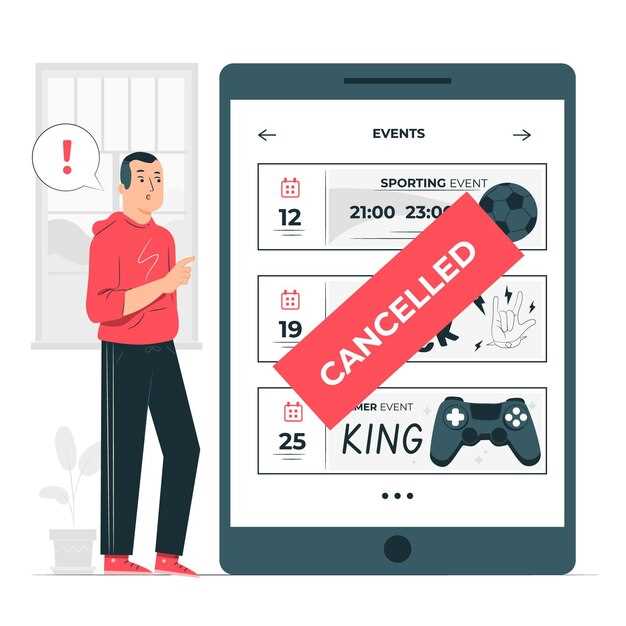Explore mobile esports, where games like Call of Duty: Mobile and Clash Royale are redefining competitive play. These titles have captivated millions, not just for their entertainment value but for their ability to foster a thriving community of gaming enthusiasts.
The key to understanding this surge lies in the seamless blend of accessibility and competition. Mobile games remove barriers, allowing players to engage with titles anytime and anywhere. This has paved the way for competitions that are as exhilarating as those on PC and console platforms, making them a staple across U.S. charts.
A closer look at the numbers reveals that mobile gaming now accounts for a significant portion of the esports audience. In 2023, titles like Free Fire attracted a massive viewership, with tournaments boasting substantial prize pools and sponsorships. This not only highlights the competitive scene’s growth but also its burgeoning influence on the traditional esports domain.
The sustained popularity of these games can be attributed to their continuous updates and community engagement. Developers keep the player base invested by releasing new content, incorporating feedback, and organizing events that encourage collaboration and rivalry. This dynamic environment ensures that mobile esports remains at the forefront of competitive gaming.
Understanding the Rise of Mobile Esports in the U.S.

Start by analyzing the accessibility and affordability that mobile esports consistently provide, attracting a wide audience across diverse demographics. Mobile devices are ubiquitous, which lowers the entry barrier compared to traditional esports platforms. Industry reports highlight that in the last year, over 60% of U.S. gamers engaged with mobile esports, marking a significant trend shift.
Mobile esports deliver a social gaming experience, enhancing player engagement. Integrating with social media allows players to easily share achievements and connect with friends, significantly boosting user participation. Developers strategically incorporate social elements, resulting in higher retention rates and ongoing player growth.
Analyzing player behavior and preferences reveals that popular mobile esports titles tailor gameplay to fit shorter play sessions, accommodating the fast-paced lifestyle of modern gamers. Titles like “PUBG Mobile” and “Call of Duty Mobile” offer intense, quick matches satisfying both casual and competitive players alike.
Understanding advanced technological developments plays a pivotal role. Enhanced graphics and improved processing power of modern smartphones create rich, immersive experiences that rival traditional platforms. The accessibility of cloud gaming technology further amplifies this experience by reducing latency and enabling high-performance gaming on the go.
Recognizing the monetization strategies employed by developers is key. Unlike traditional platforms, mobile esports often utilize free-to-play models supported by in-app purchases and microtransactions, creating a lucrative revenue stream. Event sponsorships and partnerships also expand financial opportunities, contributing to ecosystem growth.
Forecasts suggest continuous growth as mobile esports continue to expand their influence. Industry analysts predict mobile esports in the U.S. will generate over $1 billion in annual revenue by 2025. Developers, investors, and players are encouraged to watch the market closely as mobile esports shape the future of competitive gaming.
Key Factors Driving Popularity
Optimize user engagement by focusing on intuitive game design and captivating graphics. The rise of mobile esports in the U.S. is powered by titles that offer seamless gameplay with minimal barriers to entry. Games that provide a low learning curve attract diverse player bases, including casual gamers stepping into the esports scene.
Leverage social connectivity within platforms to enhance competitive spirit. Features that enable easy interaction, such as chat functions or team-based challenges, drive community growth and repeat participation. Community-driven events keep players returning, fostering loyalty through shared experiences.
Pay close attention to consistent updates and timely content. Games introduced with regular new features or seasonal events retain player interest and maintain momentum on the charts. Such updates ensure content remains fresh and engaging while addressing any player feedback effectively.
Capitalize on cross-promotion and collaborations with popular brands or influencers. These partnerships expand reach and attract a wider audience, leveraging existing fanbases to boost visibility and engagement. A well-known figure endorsing a title can lead to spikes in downloads and active players.
Consider accessibility features and diverse platforms. By supporting various devices and ensuring inclusive design, games broaden their reach, tapping into a wider demographic that includes differently-abled players. This inclusivity not only increases user base but establishes a progressive image.
Differences Between Mobile and Traditional Esports
Consider the accessibility factor: mobile esports offer a more inclusive platform. Anyone with a smartphone can download a game and start competing, eliminating the barrier of needing expensive hardware. This has led to a substantial increase in player base and audience, as smartphones are ubiquitous and more affordable compared to gaming PCs or consoles. Esports like “PUBG Mobile” and “Call of Duty Mobile” have seen massive growth because of this accessibility, drawing millions of players globally.
Look at the format and structure. Traditional esports often involve large-scale tournaments held in massive arenas with teams flying in from around the world. In contrast, many mobile esports tournaments are conducted online, which reduces logistical complexities and costs. This makes participation easier for new teams and players, facilitating a dynamic competition environment.
Observe the gameplay differences. Mobile games are designed with shorter session lengths, catering to players who engage during commutes or breaks. This contrasts with traditional esports titles like “Dota 2” or “Counter-Strike: Global Offensive,” where matches can last significantly longer and require dedicated blocks of time. The shorter, intense structure of mobile games suits the on-the-go lifestyle of many players, leading to increased engagement levels.
Check the technological innovations. Mobile esports leverage touch controls and motion sensors, continually pushing the boundaries of interactive gameplay. Developers often introduce updates and new features more frequently to keep mobile audiences engaged, matching the fast-paced nature of mobile gaming. This stands in contrast to the more static nature of controls and updates in traditional PC or console gaming.
Consider the marketing and monetization strategies. Mobile games often implement microtransactions and season passes to generate revenue, offering cosmetic items, battle passes, and other in-game purchases. This model has proven successful in maintaining a steady income stream and continuous user engagement. Traditional esports might rely more on sponsorships, advertisements, and significant prize pools generated by large-scale events.
In conclusion, while both mobile and traditional esports offer thrilling competition, their differences cater to distinct player dynamics and preferences, with mobile esports leading the charge in accessibility and rapid engagement in the U.S. market charts.
Impact on Gaming Industry Revenue
Focus on mobile esports as a key revenue driver to maximize growth potential. With titles like “PUBG Mobile” and “Garena Free Fire” leading downloads, these games not only draw players but also entice advertisers. Mobile esports creates diverse revenue streams through in-app purchases, live streaming, and sponsorships, translating to substantial financial growth.
Explore opportunities in microtransactions within these hit games, as players spend more on customizable features and exclusive content. In-app purchases alone have accounted for billions in the gaming sector, consistently outpacing other revenue streams. Engaging players through targeted offers and dynamic content updates encourages continuous spending.
Expand marketing efforts to tap into the growing audience of mobile esports by partnering with influencers and streaming platforms. Collaborating with content creators helps reach younger demographics, increasing visibility and attracting new users, thus enhancing lifetime player value.
Foster community engagement through regular tournaments and events. Hosting esports competitions drives both participation and viewership, attracting advertisers and sponsors eager to tap into the engaged audience. This strategy not only increases revenue but also solidifies brand loyalty and community ties.
Stay agile in analyzing market trends and player preferences. Utilize data analytics to tailor gaming experiences and introduce features that align with user demands. By remaining responsive to player feedback and industry shifts, companies can sustain and elevate revenue growth, ensuring a competitive edge.
Audience Demographics and Preferences
Focus on the growing segment of Gen Z, as they make up a significant portion of the mobile esports audience in the U.S. Understanding their preferences is crucial for engaging this key demographic effectively.
- Age Group: The majority of players are aged between 16-24. Aim to create content and features that appeal to their youthful, dynamic interests.
- Gender Balance: The gender split is more balanced than traditional esports. Consider inclusive marketing strategies that resonate with both male and female gamers.
- Game Preferences: Mobile battle royales and multiplayer online battle arenas (MOBAs) top the list. Producing engaging content for titles like “PUBG Mobile” and “League of Legends: Wild Rift” can increase viewer retention.
- Viewing Platforms: Twitch and YouTube dominate streaming. Optimize content for these platforms to reach a larger audience effectively.
Highlight social interaction features, as Gen Z values community and connectivity. Integrate features that encourage competitive social interactions and provide incentives to share their gaming experiences online. Tailoring marketing and development efforts to these preferences enhances engagement and builds a loyal fanbase.
Challenges and Opportunities in the Market
To successfully navigate the rapidly growing mobile esports industry, prioritize understanding consumer behavior. According to Newzoo, mobile games will generate over $90 billion in revenue this year, with esports accounting for a significant portion. Grow market share by targeting untapped demographics, particularly among younger players who use mobile devices more frequently than PCs or consoles.
One of the primary challenges in the mobile esports market is device fragmentation. With numerous Android and iOS configurations, developers need to ensure consistent performance across all devices. Focus on optimizing game performance to enhance user experience and reliability. Consider implementing cloud gaming solutions, which can help mitigate device limitations, allowing players to run high-demand games smoothly regardless of their hardware capabilities.
Monetization remains a critical area for growth. Utilize both in-game purchases and advertising to enhance revenue streams, but balance this with maintaining game integrity. The mobile esports audience is particularly sensitive to aggressive monetization strategies, so transparency in how purchases affect gameplay is crucial.
Security issues such as cheating and account hacking pose another challenge. Implementing robust anti-cheat systems and strong authentication measures is necessary to protect the competitive integrity of esports titles. Collaboration with cybersecurity experts can also preemptively address potential threats and reassure the player base of their data safety.
The burgeoning mobile esports market also presents an opportunity for building community engagement. Organize regular events, create content around game strategies, and encourage player interaction through forums or social media groups. By fostering a strong community, games can maintain high levels of player retention and satisfaction.
To sustain growth, enter strategic partnerships with brands keen on engaging with the gaming demographic. This can diversify revenue and increase visibility through co-branded content, tournaments, and collaborations. Leverage influencers and content creators to amplify reach and credibility, making your title a mainstay in the gaming community.
| Challenge | Opportunity |
|---|---|
| Device Fragmentation | Cloud Gaming Solutions |
| Aggressive Monetization | Transparent In-game Purchases |
| Security Issues | Robust Anti-Cheat Systems |
| User Engagement | Community Building |
| Market Competition | Strategic Brand Partnerships |
Top Mobile Esports Games Leading the U.S. Market

Invest in “Call of Duty: Mobile” to experience a game that has captivated millions with its thrilling gameplay. Its integration of console-quality graphics with touch controls has helped it skyrocket in popularity, becoming a staple in competitive gaming events. Major esports tournaments consistently feature this title, drawing significant viewership and a dedicated fan base.
“PUBG Mobile” continues to dominate the leaderboards due to its immersive battle royale experience. With regular updates and seasonal events, players enjoy fresh content and plenty of reasons to keep coming back. The game’s robust tournament scene in the U.S., backed by big-name sponsors, ensures it’s a headline act in the mobile esports arena.
“Garena Free Fire” captivates audiences with its fast-paced gameplay and unique character abilities. Its lower device requirements make it accessible to a broad demographic, increasing its presence and community participation. The game has made remarkable strides in the esports space, with dynamic events and attractive prize pools that encourage competitive play.
“League of Legends: Wild Rift” brings the esteemed MOBA franchise to mobile, allowing players to enjoy strategic battles and intricate team-based gameplay anywhere. The game’s entry into the mobile esports sector has been met with enthusiasm, fostering a vibrant competitive environment that mirrors its PC counterpart’s success.
Consider participating in “Mobile Legends: Bang Bang,” a game known for its solid esports ecosystem and frequent tournaments. Its balanced roster of heroes and strategic gameplay make it a favorite among players and spectators alike. The consistent updates and growing championship series have cemented its status as a top-tier mobile esports title in the U.S. market.
Overview of Leading Esports Titles
Dive straight into the dynamic selection of mobile esports titles currently dominating U.S. charts. Players and teams thrive in the competitive arenas of games like “PUBG Mobile”, “Call of Duty: Mobile”, and “Free Fire”. Each offers unique mechanics and community appeal that propels its popularity.
A keen focus on specific aspects of these games can magnify competitive edge and improve performance. “PUBG Mobile” demands strategic positioning and team coordination, while “Call of Duty: Mobile” emphasizes quick reflexes and adaptability. “Free Fire”, on the other hand, rewards aggressiveness and tactical planning. Knowing these strengths and adapting to their gameplay style can yield significant results.
| Game Title | Focus Area | Key Characteristics |
|---|---|---|
| PUBG Mobile | Strategy | Team Coordination, Map Control |
| Call of Duty: Mobile | Reflexes | Fast-Paced, Diverse Modes |
| Free Fire | Adaptability | Short Matches, High Intensity |
Consistently analyzing match replays in these games offers insights into tactical mistakes and opportunities for improvement. Coupled with community feedback and game patch updates, players can stay ahead of the curve, ensuring sustained success in competitive arenas. The right blend of skill growth and game understanding defines the pathway to the top rankings in these popular esports titles.
Game Mechanics and Features Attracting Players
Prioritize crafting intuitive controls that accommodate touch interfaces. Many successful mobile esports titles offer highly responsive touch controls that provide players with a seamless gaming experience. For instance, “PUBG Mobile” optimizes shooting mechanics to ensure accuracy via touch inputs, making gameplay engaging and competitive.
Incorporate diverse game modes to maintain interest. Multiple gaming options, such as solo, duo, and squad modes in battle royales like “Free Fire”, encourage different strategies and social interactions, keeping players engaged for longer periods.
- Regular Updates: Continually refreshing content through seasonal events and updates motivates players to return frequently. “Clash Royale” excels by frequently introducing new cards and challenges, providing a dynamic gaming environment.
- Social Features: Facilitate social connections within the game. Leaderboards, chat functions, and team collaborations fuel a sense of community, as seen in “Mobile Legends: Bang Bang”, enhancing player loyalty and competition.
- Reward Systems: Implement a comprehensive reward system that satisfies both casual players and hardcore gamers. Daily missions, achievement unlocks, and progression rewards in games like “Call of Duty: Mobile” cater to varied play styles and incentivize regular engagement.
- Accessibility: Ensure that your game is accessible to a broad audience by offering scalable graphics and customizable controls. This allows players with different device capabilities to fully enjoy the game, as demonstrated by “Brawl Stars”.
Finally, focus on strategic monetization that respects the player’s time and investment. Offering skins, character upgrades, and non-essential in-game purchases creates a fair playing field, as successfully executed in “Fortnite”. Balancing revenue generation with player satisfaction is the key to sustaining an engaging and popular mobile esports title.
Competitive Scene and Major Tournaments
Explore titles that boast a thriving competitive scene through active participation in major tournaments. Key games that dominate include:
- Call of Duty: Mobile Championship: With substantial prize pools, this tournament attracts top-tier teams globally. Engage by watching live streams on platforms like YouTube or participating through open qualifiers if you meet rank requirements.
- PUBG Mobile Global Championship: A premier event showcasing elite teams competing for impressive rewards. Stay connected via official social media channels for updates and support your favorite teams through fan engagement features.
- Free Fire World Series: This tournament offers one of the largest prize pools in mobile esports. Enthusiasts can join community events or regional leagues to gain experience and advance to global stages.
Organizations like ESL and Tencent frequently host high-stakes competitions, giving aspiring players opportunities to shine. Join local qualifiers or connect with online communities to find teammates and strategize effectively. Major broadcasters provide extensive coverage, enhancing the viewing experience with expert commentary and analysis.
For further immersion, consider engaging with forums or social media groups dedicated to esports discussions and tournament news. Participation and interaction boost understanding and provide networking opportunities with fellow enthusiasts and professionals in the field.
Engagement is key–whether as a player or spectator. Keep abreast of seasonal events and official announcements for a seamless integration into the exhilarating mobile esports environment.
Q&A:

What are the top mobile esports titles currently dominating the U.S. charts?
The top mobile esports titles currently leading the U.S. charts include popular games like “PUBG Mobile,” “Call of Duty: Mobile,” and “Free Fire.” These games have managed to capture a large audience due to their engaging gameplay and competitive modes.
How has the popularity of mobile esports changed the gaming industry in the U.S.?
Mobile esports have transformed the U.S. gaming industry by expanding the accessibility of competitive gaming. With lower entry barriers compared to traditional esports, a wider demographic can participate, leading to significant growth in player and viewer numbers. This shift has also attracted increased investment from sponsors and advertisers who see potential in reaching the mobile audience.
What factors contribute to the success of mobile esports titles in the U.S. market?
Several factors contribute to the success of mobile esports titles in the U.S. market. These include the games’ easy accessibility on smartphones, the ability to play anytime and anywhere, continuous updates and improvements by developers, and robust online communities that encourage competitive play. Moreover, the increasing prize pools and organized tournaments add to their appeal.
Are there any emerging mobile esports titles that could challenge the current chart-toppers?
Yes, there are several emerging mobile esports titles that have the potential to challenge the current leaders. Games like “Wild Rift,” the mobile version of “League of Legends,” and “Apex Legends Mobile” are gaining traction. Their established fanbases and high-quality gameplay could help these titles capture a larger share of the market in the future.
How do mobile esports tournaments in the U.S. compare to traditional esports events?
Mobile esports tournaments in the U.S. are becoming increasingly similar to traditional esports events in terms of organization and scale. They feature large prize pools, professional-level production quality, and are often streamed to wide audiences. However, mobile esports tournaments generally attract a younger and more diverse audience due to the accessibility of mobile gaming. The growth in popularity of mobile titles continues to drive the evolution of these events, making them more prominent and competitive.
What factors are contributing to the rise of mobile esports in the United States?
The surge in mobile esports popularity can be attributed to several factors. Firstly, the accessibility and convenience of mobile devices allow a larger audience to participate and engage with these games. Many people own smartphones and tablets, making mobile gaming more inclusive. Secondly, the rapid advancement in technology has improved the quality and performance of mobile games, making them more appealing to players and audiences. Additionally, the increasing investment from game developers and sponsors has led to a more structured and competitive esports environment, further boosting its growth.
Which mobile games are currently leading in the U.S. esports charts, and why are they popular?
Currently, games such as “PUBG Mobile,” “Call of Duty: Mobile,” and “Fortnite” are leading the mobile esports charts in the U.S. These games are popular due to their engaging gameplay, competitive nature, and the strong communities they have built around them. “PUBG Mobile” offers a thrilling battle royale experience with frequent updates and events that keep players engaged. “Call of Duty: Mobile” combines the iconic first-person shooter experience with mobile accessibility, attracting fans of the franchise. Similarly, “Fortnite” is known for its dynamic gameplay and vibrant in-game events. All these games have robust support from developers, ensuring a steady flow of content and professional competitions.
